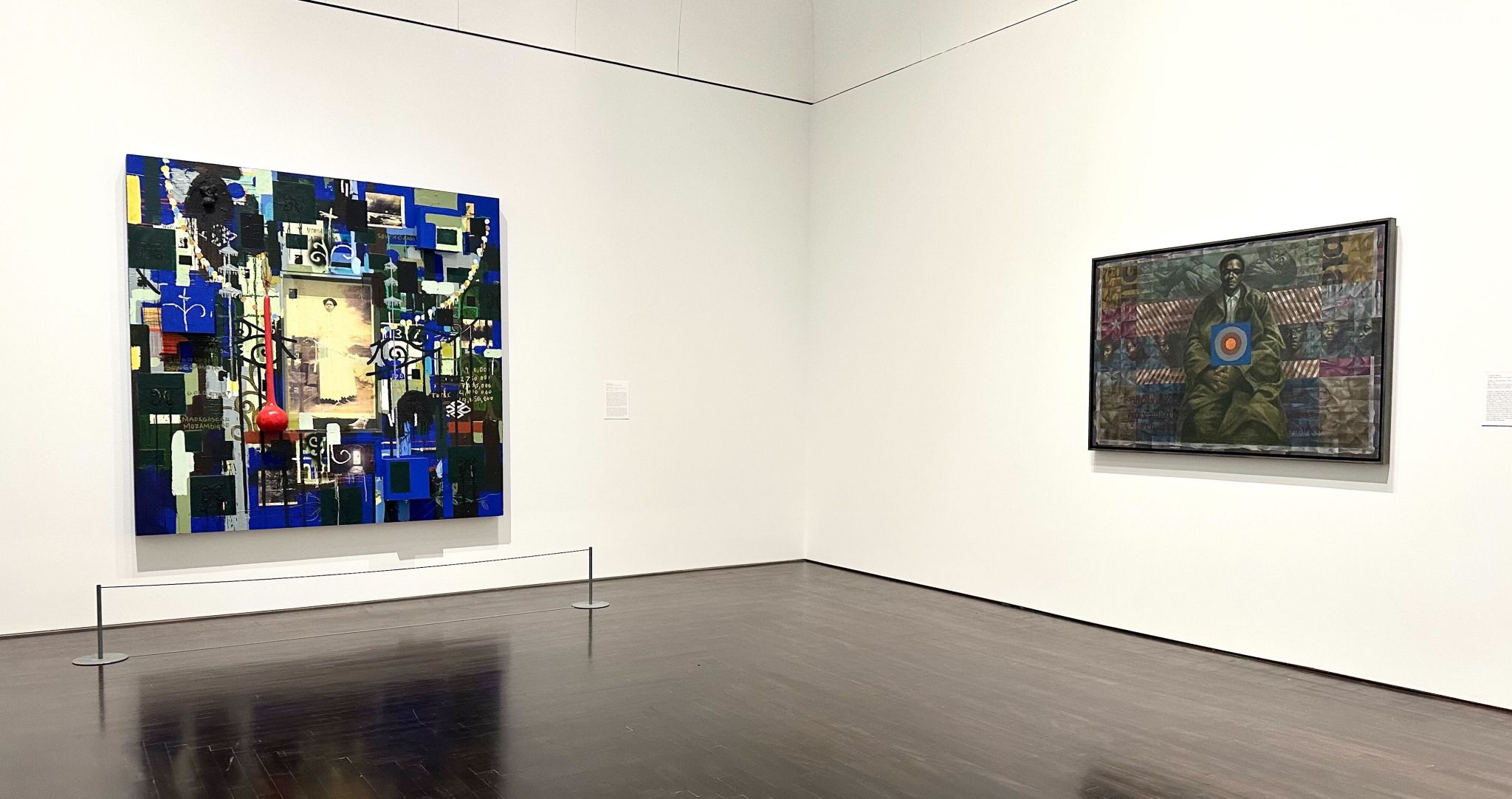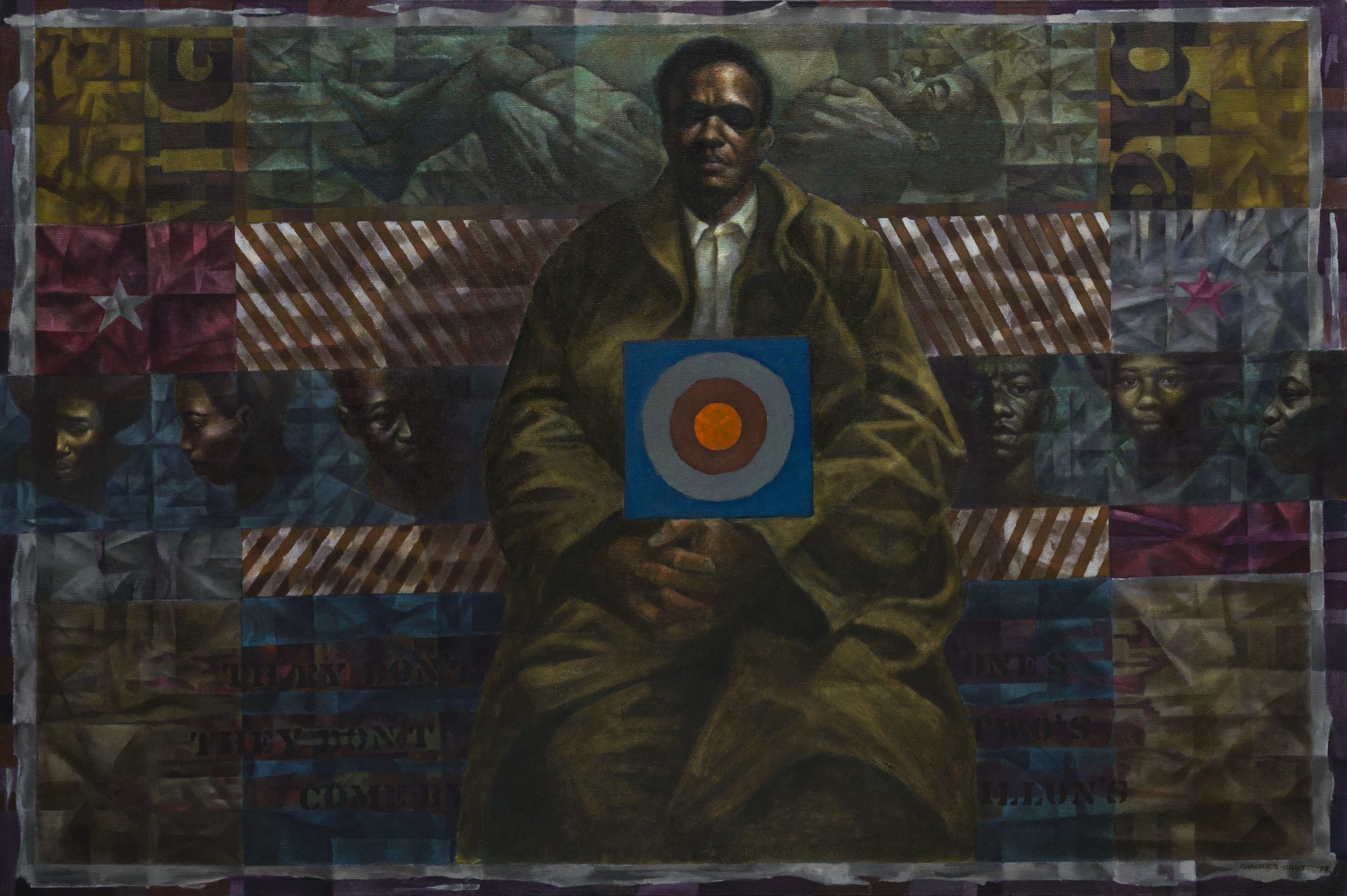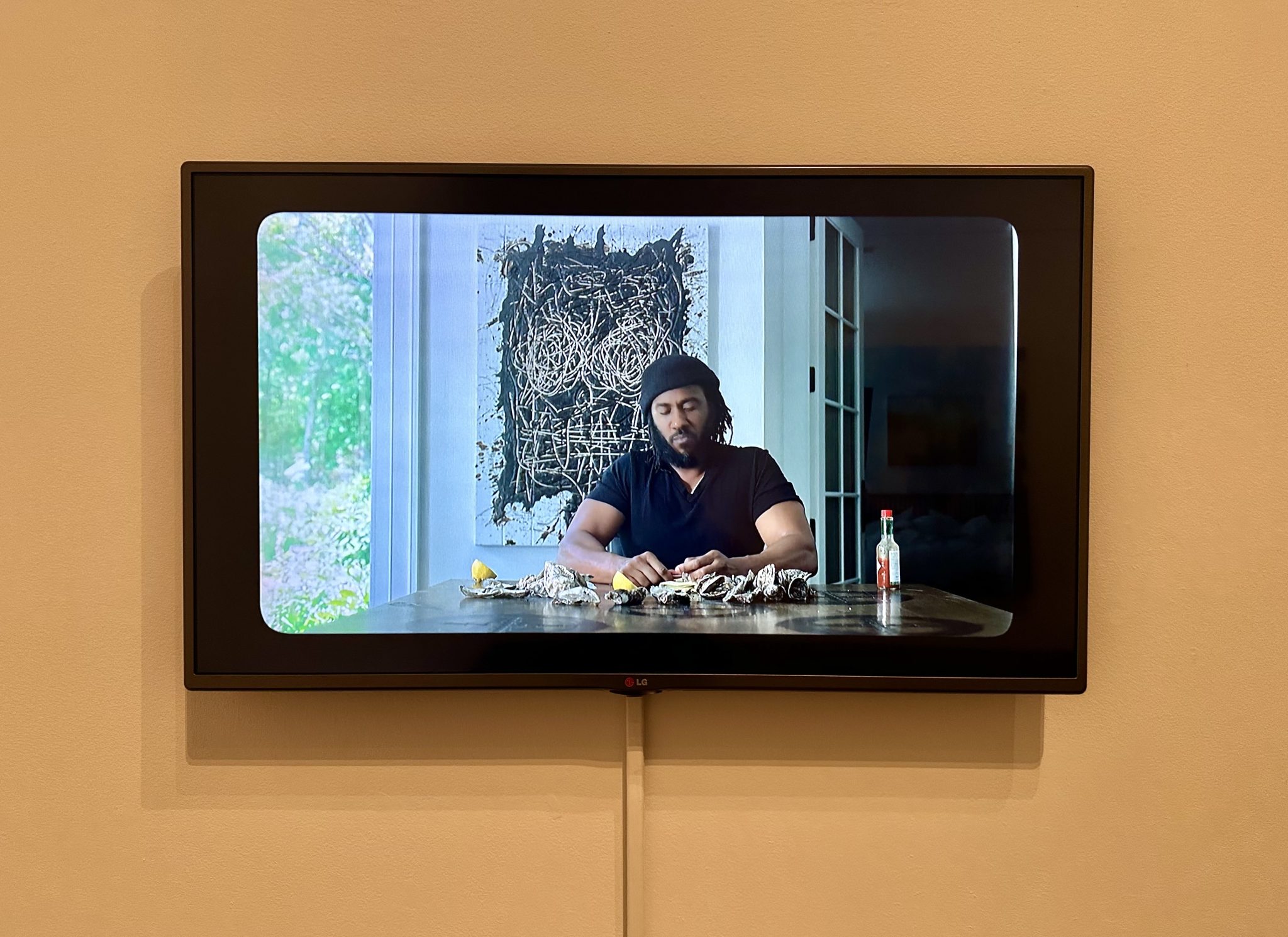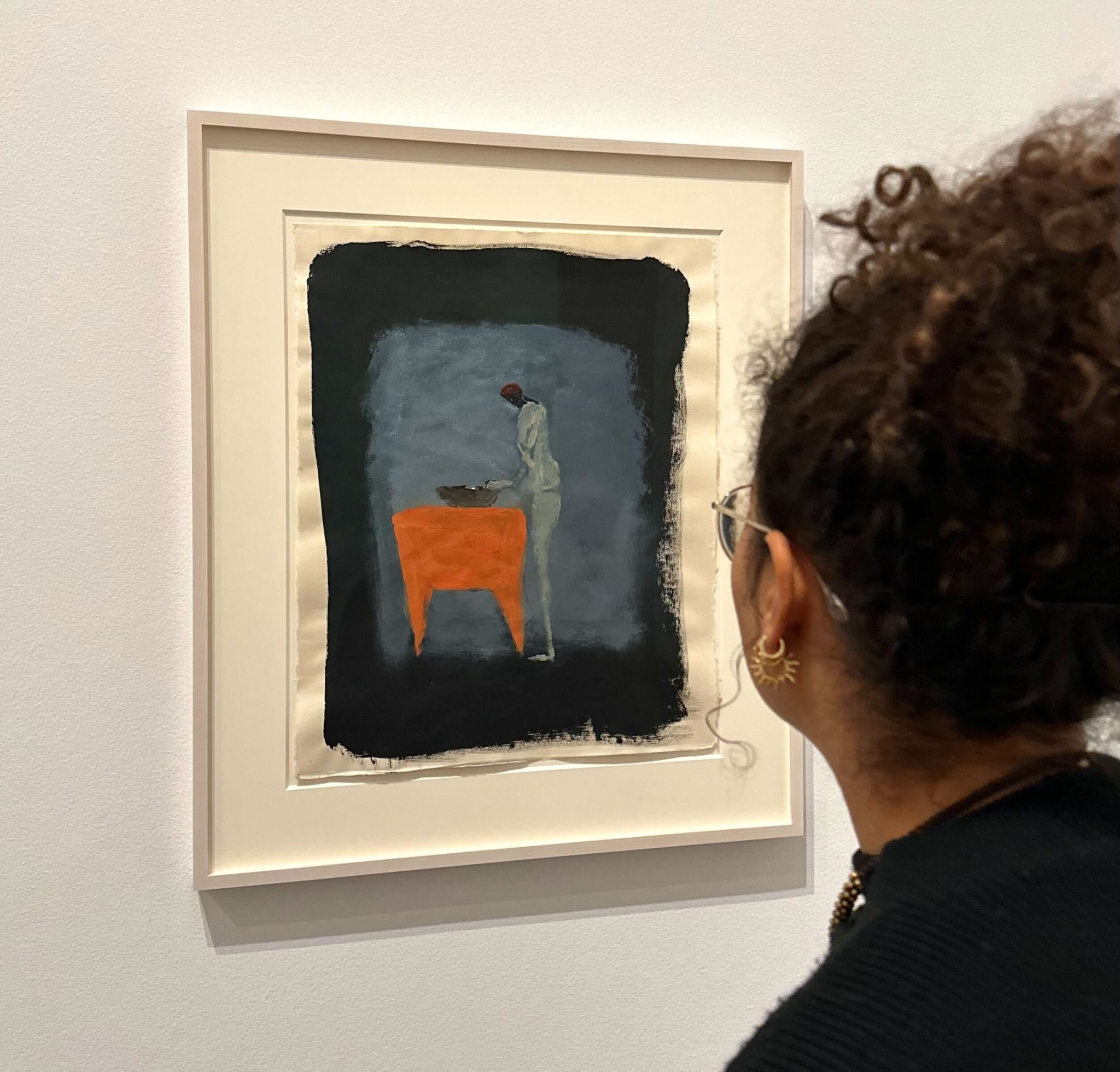5 Works that Explore Black Diasporic Memories
February 2024, by Maysa Martins, 2023-24 Modern and Contemporary Art Fellow, Blanton Museum of Art

In the essay “The Site of Memory,” African American author Toni Morrison metaphorically describes the sweeping forces of memory through a depiction of human intervention into the path of the Mississippi River. She writes:
“You know, they straightened out the Mississippi River in places, to make room for houses and livable acreage. Occasionally the river floods these places. ‘Floods’ is the word they use, but in fact it is not flooding; it is remembering.”
Toni Morrison, “The Site of Memory”, from Inventing the Truth: The Art and Craft of Memoir, edited by William Zinsser, Houghton Mifflin company: New York, 1995
Morrison paints an image in which the memory of the river, forcibly reconstructed into a straight line, refuses confinement. It asserts itself and overpowers its constraints by occupying space, disrupting the presumed order of everyday life, and imposing its living, complex, and winding forms. Similarly, the five artists in “Reclaiming History,” a special presentation on view in the Blanton’s Modern and Contemporary Art galleries, challenge established historical structures, and modes used to apprehend, understand, and represent the memories of people in the Black diaspora. Their works highlight the often forgotten or obscured histories of Black people’s everyday lives and political struggles, as well as the unnameable, and often untraceable losses suffered by their ancestors. All the artists in this installation reshape and reclaim Black histories. They interrogate official records and make space for more openly fragmentary and non-linear spaces of memory, such as literature, poetry, personal experience, and spirituality. By assembling and reassembling images of personal and collective memories, these artists lay hold of both concrete and intangible reverberations of major and ordinary events, reshaping and expanding the scope of history.
Charles White, Homage to Sterling A. Brown, 1972
Throughout his career, Charles White (1918 – 1979) aimed to honor the memory of both ordinary Black individuals and significant figures in African American history who were often omitted from traditional records. In Homage, White pays tribute to poet, literary critic, and folklorist Sterling Brown, who shared White’s goal of portraying and instilling pride in the everyday lives of ordinary African Americans. The oil painting features a contemplative portrait of Brown with shadowy eyes and hands united in front of his body in a resting position. Behind him are excerpts from Brown’s poem “Old Lem,” which recounts the widespread and continuing violence and racism in the U.S. The background is further comprised of disjointed images of stars, stripes, lettering snippets, portraits of anonymous young Black people, and a woman holding a child— all patched together like a quilted blanket. The fragmentary character of the painting’s background reflects both Brown and White’s endeavors to mend and honor the memory of Black Americans.

Rashid Johnson, Black and Blue, 2021
Rashid Johnson’s Black and Blue follows the artist through an ordinary day as he reads in bed, eats breakfast with his family, and exercises. Rich in historical and cultural references, the video punctuates these seemingly mundane scenes with flashes of other works made by Johnson, traditional African artworks, black and white photographs depicting the daily lives of Black people from the past, and references to African American cultural landmarks like Toni Morrison’s Songs of Solomon, LeRoi Jones’s (now Amiri Baraka) The Dead Lecturer, and the song famously interpreted by Louis Armstrong—from which the video takes its title. The music, the dreamlike image flashes, and the returned gaze create a restless, oppressive atmosphere.

In a nod to Zora Neale Hurston’s autobiography Dust Tracks on a Road, in which she famously declares, “I am not tragically colored…I do not weep at the world, I am too busy sharpening my oyster knife,”1 Johnson calmly eats oysters at his kitchen table, in a gesture that symbolizes both Hurston and Johnson’s effort to grasp their humanity out of the tangible everyday life. The intertwining of contemporary and traditional artworks, images from the past and present, from personal and collective memories, reflect Johnson’s endeavor to simultaneously grapple with the potency of the ordinary and the weight of Black history.
1 Zora Neale Hurston, Dust tracks on a Road : an autobiography. Lippincott, 1942
Reggie Burrows Hodges, Spinning Dub Records at Groove Tree, 2021
Reggie Burrows Hodges’ practice is driven by an appreciation for the ordinary, seeking to capture the intersection between concrete and inner everyday moments. Using a black background as a starting point, Hodges employs foggy brushstrokes to construct scenes that blend figures and surroundings, playing with the viewer’s perception and recreating the nebulous, imprecise effect of memories. The haziness of his paintings and the lack of distinguishing features of his figures reflect his attempt to embrace, materially and metaphorically, the pervasiveness and impenetrability of Black experience and memory.

The layered black and faded blue background of this painting invites the viewer into the world of an anonymous Black figure, who leans over a red table and plays with a vinyl record player. As part of the ongoing series entitled Spinning Dub Records, this work refers to the Jamaican music genre that grew out of reggae in the 1960s and 70s and which has deeply influenced 21st-century music. Spinning Dub Records at Groove Tree alludes to both Hodges’ personal experience and memories as a musician and member of the dub band Trumystic, and the penetrating historical influence of music and culture from the Black diaspora.
Glenn Ligon, Untitled (Hands/ Stranger in the Village), 1988
In his work, conceptual artist Glenn Ligon creates text-based images inspired by fragments of writings and speeches made by influential 20th-century cultural and political figures. The artist contemplates how the histories of slavery, civil rights movements, and sexual politics permeate and influence American society. In Untitled (Hands/ Stranger in the Village), the artist overlaps a photograph taken during the 1995 Million Man March in Washington, D.C., and an excerpt from James Baldwin’s 1953 essay Stranger in the Village, in which the late African American writer reflects on his experience as the first Black person to live in a small town in Switzerland. The overlay of these two elements emphasizes the ambivalence between Baldwin’s personal account of isolation and displacement, and the collective undertaking of the march. It also alludes to the conflict between Baldwin’s complex sexual identity and the patriarchal and homophobic rhetoric of the march’s organizer, the leader of the Nation of Islam, Louis Farrakhan. Ligon’s use of coal dust and overlaid, stenciled fragments of Baldwin’s text and the photograph purposefully obscure each of the elements to a point of illegibility. By doing so, he plays with the visibility and the opacity of the lives, and the history of Black people in the U.S. and across the diaspora.

Radcliffe Bailey, By the River, 1997
Like a home altar, Radcliffe Bailey’s By the River honors and makes present the memory of ancestors. At the center of the composition is a reproduction of a nineteenth or twentieth-century carte de visite of a young Black woman. The photograph, given to the artist by his grandmother, depicts a relative of a past generation. Surrounding it, Bailey has inscribed key numbers and geographical locations related to the transatlantic slave trade, as well as photographs of rivers and symbols inspired by different Afro-diasporic spiritual traditions. The river evoked by the photographs and the title has an important role in Central African cosmologies, which have deeply influenced Bailey’s works. Representing the still waters that existed before the creation of the universe, as well as the source from which all life has originated, the river (or Kalunga) is at the center of the circular transference between the material and spiritual realms. The umbrella-like symbols inscribed on both sides of the young woman’s photograph as well as the seashell placed on her feet allude to Obatala, the eldest of the Yoruba deities worshiped on both sides of the Atlantic, and who is in control of the origination of new human life. By surrounding his ancestor’s photograph with symbolic references from both sides of the Atlantic, Bailey positions himself and his own family lineage within a broad and ongoing Black history that encompasses, but also extends well beyond, the history of Atlantic slavery.

This post celebrates and honors the memory and legacy of Radcliffe Bailey, who has recently and prematurely crossed to the other side of the river.

